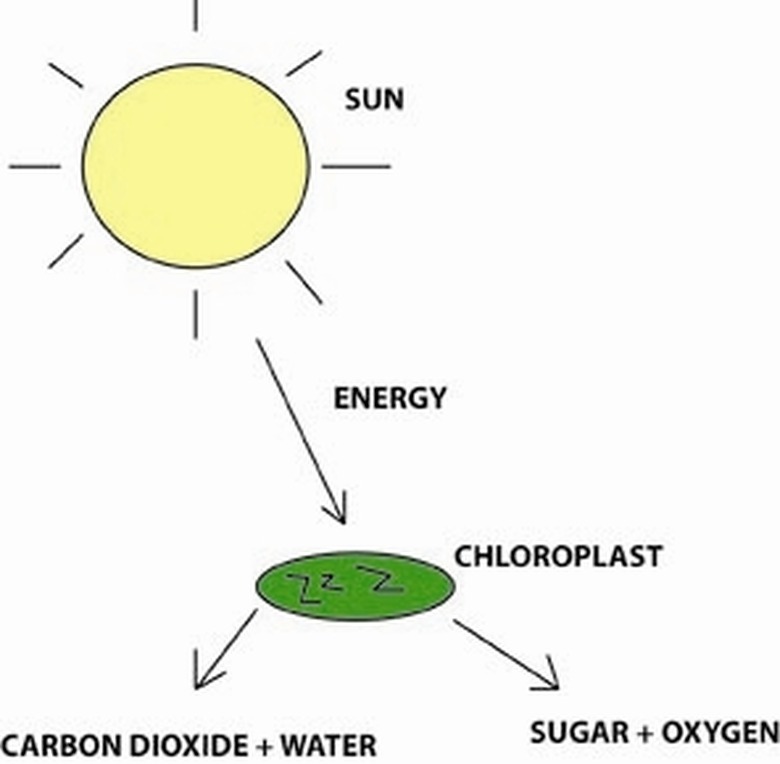How Do Flowers Get Their Food?
Sources of Food
Sources of Food
Flowers get their food from sunlight. Flowers are the reproductive parts of plants, and plants are unique among living things in that they make their own food in special cells called chloroplasts. All life on earth depends on the ability of plants to turn the energy from the sun into food through a process called photosynthesis. Photo means "light" and synthesis means "to make by combining." Other living things on earth either eat the plants, or eat the animals that eat the plants, or both, in order to sustain their lives.
The Process
The Process
The sunlight that strikes the earth is actually electromagnetic energy. When this electromagnetic energy strikes a green plant, a complex series of reactions take place that result in the plant producing energy that is stored in the form of sugar molecules.
Energy From the Sun
Energy From the Sun
Light is visible to us as the colors of the spectrum; the colors we see in a rainbow. A green plant appears green to us because it reflects green wavelengths. Plants absorb mostly red and blue wavelengths of light to manufacture sugars.
Plants, like all organisms, are made up of cells. Within plant cells are chloroplasts, smaller structures or organelles, which contain chlorophyll. The chlorophyll captures the sunlight and within the chloroplast, sunlight is turned into food by a chemical reaction that can be written as the following formula: 6CO2+6H2O—–>C6H12O6 + 6O2. This means that six molecules of carbon dioxide plus six molecules of water yield one molecule of glucose and six molecules of oxygen. The glucose is food and is used in various forms by all living things on our planet. Oxygen is a byproduct of this reaction and is necessary to sustain animal life.
Flower Food
Flower Food
Some commercial products for cut flowers are sold as flower food. These prolong the freshness of cut flowers, and usually contain some sugar and a small amount of bleach to retard the growth of bacteria. You can make your own cut flower preservative by combining 1 tsp. sugar, 1 tsp. household bleach, and 2 tsp. lemon or lime juice in 1 qt. lukewarm water.
Fertilizer
Fertilizer
While not technically food, fertilizers are sometimes called plant food. Plants do require certain elements to grow, and the elements they need in greatest quantity, the macronutrients, are NPK; nitrogen, phosphorous and potassium. You will see these listed on fertilizer products as percentages, for example, 5-10-20 fertilizer is 5 percent nitrogen, 10 percent phosphorous and 15 percent potassium. Plants also need micronutrients, small quantities of elements such as copper and zinc. Fertilizer package labels explain which plants they are best suited for.
References
Cite This Article
MLA
Czaja, Je'. "How Do Flowers Get Their Food?" sciencing.com, https://www.sciencing.com/how-do-flowers-get-their-food-12220332/. 21 July 2017.
APA
Czaja, Je'. (2017, July 21). How Do Flowers Get Their Food?. sciencing.com. Retrieved from https://www.sciencing.com/how-do-flowers-get-their-food-12220332/
Chicago
Czaja, Je'. How Do Flowers Get Their Food? last modified March 24, 2022. https://www.sciencing.com/how-do-flowers-get-their-food-12220332/

